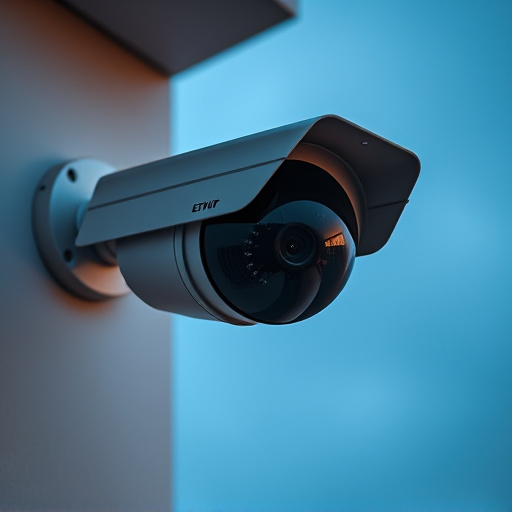Solar-powered fake surveillance cameras have experienced exponential growth due to privacy concerns and deterrence needs, attracting individuals and businesses seeking budget-friendly, less conspicuous monitoring solutions. With high-quality sensors and eco-friendly design, these devices offer seamless integration and continuous operation for enhanced security in residential areas, small businesses, farms, outdoor events, critical infrastructure, transportation hubs, and retail environments. However, their discreet designs raise legal and ethical concerns regarding privacy invasion and evidence falsification, necessitating careful use to balance security and privacy.
In the ever-evolving landscape of security, realistic fake surveillance equipment has emerged as a game-changer. This article delves into the growing market for solar-powered fake surveillance cameras, exploring their design and functionality. We analyze the benefits and diverse applications across sectors while also considering legal considerations and ethical implications. Discover how these innovative devices are revolutionizing security without compromising privacy. Key focus: solar powered fake surveillance cameras.
- Understanding the Market for Fake Surveillance Equipment
- Design and Functionality of Solar-Powered Cameras
- Benefits and Applications in Various Sectors
- Legal Considerations and Ethical Implications
Understanding the Market for Fake Surveillance Equipment
The market for fake surveillance equipment, including realistic-looking solar-powered fake surveillance cameras, has seen a significant surge in recent years. This growing demand is fueled by various factors, from privacy concerns to the allure of deterrence and security. Individuals and businesses alike are seeking cost-effective alternatives to traditional surveillance systems, often driven by budget constraints or the desire for less obtrusive monitoring solutions. Solar-powered fake cameras, designed to mimic real security equipment, offer a unique proposition—a blend of functionality and discretion.
This trend is particularly notable in residential areas where homeowners want to enhance their properties’ security without significantly altering their exterior aesthetics. Moreover, commercial spaces, especially small businesses, are embracing this technology as a way to protect their assets while maintaining a sleek and unintrusive look. The availability of high-quality, realistic fake surveillance devices has opened up new possibilities for consumers seeking innovative ways to safeguard their privacy and secure their environments.
Design and Functionality of Solar-Powered Cameras
Solar-powered fake surveillance cameras have emerged as a clever and environmentally friendly alternative to traditional power sources, offering both aesthetic and functional benefits. These innovative devices are designed to mimic real security cameras while drawing energy from the sun, making them an ideal choice for outdoor installations or areas where electrical outlets are not readily available. The sleek and subtle design allows them to blend seamlessly into various environments, from urban landscapes to rural settings, without compromising on surveillance capabilities.
Functionally, solar-powered cameras utilize high-quality sensors and advanced technology to capture sharp images and videos, even in low-light conditions. The built-in solar panels efficiently charge the internal batteries during daylight hours, ensuring continuous operation around the clock. This autonomous nature eliminates the need for frequent battery replacements or messy power cables, making them a hassle-free and cost-effective solution for long-term surveillance needs.
Benefits and Applications in Various Sectors
Realistic-looking fake surveillance equipment, such as solar-powered fake cameras, offers a multitude of benefits and finds applications across various sectors. One of the primary advantages is its role in enhancing security measures without the need for extensive infrastructure. These fake cameras can be strategically placed to deter potential criminals, providing a cost-effective alternative to traditional surveillance systems. They are particularly useful in remote or difficult-to-wire areas, like farms or outdoor events, where power sources might be limited.
Moreover, solar-powered fake surveillance cameras contribute to environmental sustainability and reduce the carbon footprint of security operations. Their renewable energy source not only minimizes maintenance costs but also ensures continuous monitoring without worrying about power outages. This versatility makes them ideal for use in critical infrastructure protection, transportation hubs, retail environments, and residential properties, where deterrence and intelligence gathering are essential.
Legal Considerations and Ethical Implications
The proliferation of realistic-looking fake surveillance equipment, including solar-powered fake cameras, raises a series of legal and ethical concerns. On one hand, these devices can be used as decoys to deter real criminal activity by giving the appearance of enhanced security. However, their increasing availability also opens up possibilities for misuse—from invasion of privacy to creating false evidence in criminal investigations.
Legally, many countries have strict regulations regarding surveillance technology, especially when it comes to public spaces and private residences. Using fake cameras could blur these lines, leading to potential legal repercussions. Ethically, the use of such devices raises questions about trust and transparency. While they might offer a sense of security, they can also erode societal confidence if used unethically or without proper oversight. This is especially true for solar-powered models, which, due to their discreet nature, could be easily overlooked yet still capture intimate details, posing additional challenges for privacy protection.
Realistic-looking solar-powered fake surveillance cameras have emerged as a unique solution for various sectors, offering enhanced security and peace of mind. The market’s growing demand highlights the versatility and effectiveness of these devices in deterring crime and maintaining privacy. As technology advances, it is crucial to consider the legal and ethical implications while harnessing the benefits of such innovations. By understanding the design, functionality, and applications, we can navigate this evolving landscape, ensuring a balance between security enhancements and respecting individual freedoms.
